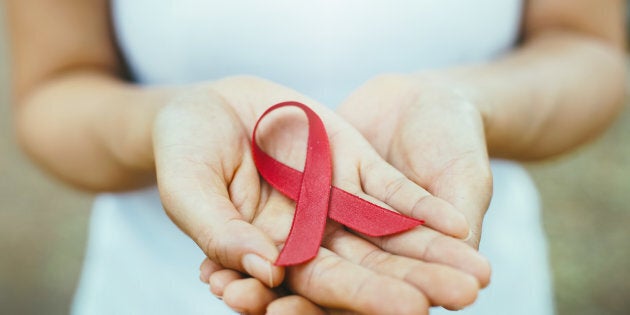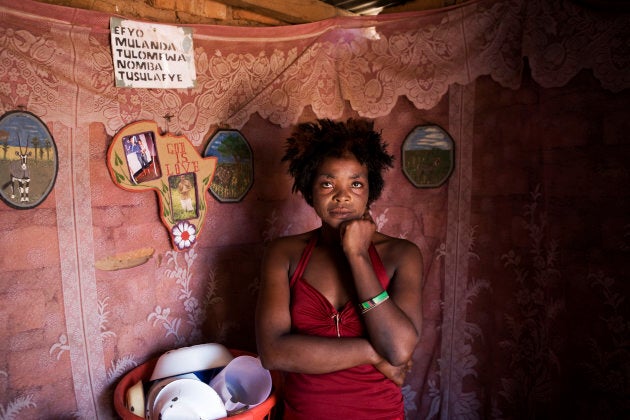
HIV science is advancing at incredible speeds.
In the four decades since the virus was discovered, we have gone from death sentence to chronic condition, and fear of easy contagion to new hope through treatment that can make people with human immunodeficiency virus uninfectious.
The scientific community gathered in Paris this past week at the ninth International AIDS Society Conference to share the latest developments in HIV treatment and prevention, and call for renewed commitment and financing to tackle remaining challenges.

These discoveries not only affect the lives of people living with HIV but will also shape our culture, society, and politics. And it's information everyone should know.
1. AIDS-related deaths have halved since 2005
A new report by the United Nations has found that 19.5 million of the 36.7 million people living with HIV globally had access to treatment in 2016, more than double the number in 2010 (7.7 million). As a result, AIDS-related deaths have nearly halved and life expectancy has steadily increased. The target is to have 30 million people on life-saving treatment by 2020.
2. HIV self-tests associated with increased testing uptake and linkage to care among female sex workers
It is estimated that 16 per cent of all people living with HIV worldwide do not know their status. A randomized control trial of 965 female sex workers in Zambia found that when women are offered the option to test themselves, either by receiving a testing kit from a peer or a coupon for one at a local pharmacy, this resulted in higher testing uptake and more rapid linkage to care.

3. Deaths among those diagnosed with HIV late are reduced with modified treatment approach
Empowering individuals to know their status is critical since late diagnosis of HIV infection can lead to reduced immunity and increased mortality. However, new research published in the New England Journal of Medicine shows that for those with advanced infection, combining treatment for HIV with pre-emptive treatment for other illnesses lowers deaths by 27 per cent and also prevents tuberculosis, cryptococcal meningitis, oral/esophageal candidiasis, and hospital admissions.
4. Long-acting injectable drugs may be the future of HIV medicine
Routes of drug administration are also changing. According to early clinical trial data presented at the conference, injections of HIV medicine consisting of two drugs (cabotegravir and rilpivirine) administered either monthly or bimonthly are as effective in maintaining viral suppression among people with HIV as daily oral pills.
5. Early, limited treatment leads to HIV remission in baby
Treatment for babies is likewise promising. A South African child born with HIV and treated for 40 weeks during infancy has since kept the virus at bay without treatment for eight and a half years. This is one of only a few known cases of HIV remission in infants after early, limited treatment and researchers are now trying to understand why.
6. Cancer therapies could provide clue to HIV cure
There is currently no cure for the virus, though Timothy Brown has spurred hope since his HIV was cured in 2008 after a bone marrow transplant for leukemia. The synergy between HIV and cancer science was the focus of a conference special session. Scientists say immunotherapy (or empowering the immune system to fight cancer) may inform similar innovative therapies for people with HIV, leading to long-term remission or possibly even a cure.

7. On-demand pre-exposure prophylaxis, or PrEP,is highly effective for HIV prevention
In the absence of a cure, prevention is crucial. While daily use of Truvada (which contains two anti-HIV drugs) is the only type of PrEP currently approved in Canada, the IPERGAY trial among gay men demonstrated 100 per cent reduction in HIV infections in those who systematically or often used "on-demand" PrEP during sexual intercourse, higher than previously reported.
8.Truvadaand vaginal ring safe and acceptable among adolescents
Sexually active adolescents also need HIV prevention options. In addition to providing access to male and female condoms and counselling on safer sex, two studies evaluated daily oral Truvada among adolescents (15-19 years) in South Africa and a monthly vaginal ring among young women (15-25 years) in the United States. Both methods were safe and tolerable in participants, though one study reported that low adherence resulted in limited protection. Data on HIV risk reduction with consistent use of these methods was not yet available in these studies.

9.Male circumcision partially protects against HIV and some other STIs in women
Previous research has shown that male circumcision reduces the risk of HIV in men by approximately 60 per cent. Based on new data released at the conference, scientists say this protection may also extend to women. In a cohort of 4,766 South African women, partner circumcision was associated with decreased prevalence of herpes simplex virus-2 (HSV-2) in all women, HIV in younger women, and syphilis in older women.
10. More evidence that an undetectable viral load prevents new infections
And finally, a study of 343 gay couples, where one partner had HIV and the other did not, reported no case of HIV transmission in 16,889 acts of condomless anal sex when the person with HIV was on treatment with a fully suppressed (or undetectable) viral load. These findings corroborate a larger study of 888 couples, gay and heterosexual, which had condomless penetrative sex 58,000 times without transmitting HIV. Consequently, more than 350 organizations from 44 countries, including UNAIDS, have publicly endorsed this statement: people on effective HIV treatment who are undetectable are untransmittable.
This doesn't mean we abandon condoms. But it does mean everyone should get tested, have unhindered and affordable access to care, and be supported to have safe discussions about sex and safer sex with their partner without fear of shame or abuse. It's also one more reason (as if we need one more) to de-stigmatize sexuality and relationships for people with HIV.
Also on HuffPost: